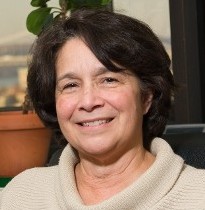Solid-State and Nano Seminar
Progress in ZnCdMgSe-based Nanostructures
Add to Google Calendar

During the past several years we have investigated and optimized a wide bandgap II-VI material family, (Zn,Cd,Mg)Se grown on InP substrates, and have explored applications of these materials in novel photonic devices, as well as new physical phenomena that they exhibit. I will briefly present some of our most recent results along three areas.
First, we have demonstrated mid-IR quantum cascade (QC) devices operating at shorter wavelengths than the currently used materials can provide. Both QC lasers and QC detectors have been explored. Room temperature electroluminescence in the 3 to 5 µm range, and broadband QC detection in the 3 to 8 µm range have been observed from these lattice matched multilayered structures.
We have also investigated a new class of materials known as submonolayer type-II quantum dots (QDs). These are typically made up of ultra-small ZnTe QDs, grown by a migration enhanced epitaxy technique, embedded in a ZnSe or ZnCdSe matrix. The type-II nature of the quantum structures results in the holes being confined to the quantum dots, while the electrons are free in the matrix material. These materials exhibit properties that have potential applications in intermediate band solar cells, and other novel devices, that are being explored in our lab.
Most recently, we have begun to investigate the growth of Bi2Se3, a material that is receiving a great deal of attention due to its unique properties as a "topological insulator". We have also begun to explore the growth by molecular beam epitaxy of multilayers of alternating Bi2Se3 and ZnCdSe layers. However, the very different crystalline structure of these two materials makes epitaxial growth a challenge. I will present our results of the growth of superlattices of these two materials in which the Bi2Se3 retains its topological features.
Maria C. Tamargo is Professor of Chemistry at the City College of New York, where she has led a molecular beam epitaxy research program over the last 20 years. Prior to being at City College she was a Member of Technical Staff at Bellcore, and before that at AT&T Bell Labs, where she worked on liquid phase epitaxy and molecular beam epitaxy of III-V and II-VI compound semiconductor structures. Her research areas include strained-layer and short-period superlattices, surface and interface chemistry, visible light emitters, optoelectronic devices, wide bandgap II-VI compounds, II-VI/III-V heteroepitaxy, low dimensional nanostructures, intersubband devices, quantum cascade lasers, VECSELs, and Topological Insulators. She has published over 280 peer reviewed papers and given multiple invited and plenary talks. She has chaired several international conferences, most recently the 2009 North American MBE Conference. She is a Fellow of the American Physical Society, an editor of Semiconductor Science and Technology and of Physica Status Solidi C, and a member of the North American MBE Advisory Board. She also served as Dean of the Division of Science at CCNY from 2001-2007.
 MENU
MENU 
